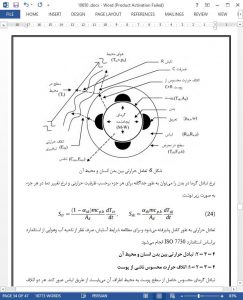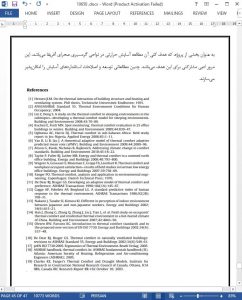Abstract
This paper presents a literature review of thermal comfort. Both rational and adaptive thermal comfort approaches are presented. An overview of the human body thermoregulatory system as well as the mathematical modelling of heat exchanged between human body and its environment in the situations of both awaked and sleeping people is presented.
1. Introduction
Thermal comfort has been defined by Hensen as ‘‘a state in which there are no driving impulses to correct the environment by the behaviour’’ [1]. The American Society of Heating, Refrigerating and Air-Conditioning Engineers (ASHRAE) defined it as ‘‘the condition of the mind in which satisfaction is expressed with the thermal environment’’ [2]. As such, it will be influenced by personal differences in mood, culture and other individual, organizational and social factors. Based on the above definitions, comfort is not a state condition, but rather a state of mind. The definition of thermal comfort leaves open as to what is meant by condition of mind or satisfaction, but it correctly emphasizes that the judgment of comfort is a cognitive process involving many inputs influenced by physical, physiological, psychological, and other factors [3].
6. Conclusion
This paper presents a literature reviews on thermal comfort, both rational and adaptive approaches are presented. In has been seen that each approach has its potentialities and limits. With people involved in near-sedentary activity and steadystate conditions, rational approach easily and reasonably produces accurate predictions of occupant thermal sensation, but it is not always a good predictor of actual thermal sensation, particularly in field study settings. Adaptive approach allows for analyses of other factors than those that can be simulated in chambers, as the subjects provide responses in their everyday habitats, wearing their everyday clothing and behaving without any additional restrictions; field studies are therefore to be encouraged in addition to laboratories experiments. However, one should be very careful when interpreting the results of thermal comfort campaigns. The actual standards help but should not be considered as absolute references. In fact, the individual state of mind that expresses satisfaction with the thermal environment is too diverse for that when small groups are considered.











